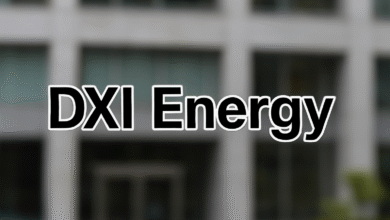7 Hidden Costs to Watch Out for When Investing in a Gold-Backed IRA

Investing in a gold-backed IRA can be an excellent way to diversify your retirement portfolio and protect your wealth against economic uncertainty. Gold has historically been a safe haven asset, often gaining value during times of market volatility. However, while the benefits are clear, many investors overlook the hidden costs associated with setting up and maintaining a gold-backed IRA. Understanding these costs is crucial for making informed decisions and ensuring that your investment aligns with your financial goals.
As you consider this investment option, it’s wise to gather comprehensive information. A gold IRA info packet can provide valuable insights into the costs and benefits of gold-backed IRAs. This resource will help you navigate the complexities of investing in precious metals and ensure that you’re fully aware of all potential expenses. In this article, we’ll explore seven hidden costs that can eat into your investment returns when investing in a gold-backed IRA.
1. Setup Fees
One of the first costs you may encounter when opening a gold-backed IRA is the setup fee. Many gold IRA companies charge a fee for establishing your account, which can vary significantly from one provider to another. This fee often covers administrative tasks, including processing paperwork and setting up your account with a custodian.
It’s important to compare the setup fees of different companies before making a decision. Some companies may offer lower fees but provide limited services, while others may charge higher fees but offer added value, such as educational resources and personalized support. Always read the fine print and ensure that you understand what’s included in the setup fees. A gold IRA info packet can help clarify these costs and provide a breakdown of what you should expect.
2. Annual Maintenance Fees
In addition to setup fees, gold-backed IRAs typically incur annual maintenance fees. These fees cover the ongoing administrative costs of maintaining your account, including record-keeping, compliance, and reporting to regulatory agencies.
Annual fees can range from a few hundred dollars to over a thousand, depending on the complexity of your account and the services provided by the custodian. Some companies may offer lower annual fees but charge higher transaction fees, so it’s essential to consider the overall cost structure when evaluating your options. Understanding these fees upfront will help you avoid surprises down the line and allow you to budget accordingly for your retirement investment.
3. Storage Fees
When you invest in a gold-backed IRA, your physical gold must be stored in an approved depository. This storage comes at a cost, which can vary based on the type of depository and the amount of gold you own.
Storage fees can be charged annually or monthly, and they may depend on the value of your investment or the amount of space your gold occupies. Some companies may include storage fees in their overall service package, while others may list them separately. It’s crucial to inquire about these fees when selecting your gold IRA provider. A gold IRA info packet will typically outline the storage options available and the associated costs, making it easier for you to make an informed decision.
4. Transaction Fees
Every time you buy or sell gold within your IRA, you may incur transaction fees. These fees can vary significantly based on the provider and the nature of the transaction.
For instance, purchasing gold coins or bars might attract a different fee compared to selling them. Some companies charge a flat fee per transaction, while others may charge a percentage of the total transaction amount. It’s essential to understand these fees, especially if you plan on making multiple transactions over the years. High transaction fees can erode your investment returns, so be sure to factor them into your overall cost analysis when choosing a gold IRA provider.
5. Premiums Over Spot Price
When buying gold, you’ll often pay a premium over the current spot price. This premium can vary based on market conditions, the type of gold you are purchasing, and the dealer’s markup.
The premium covers the costs associated with minting coins, refining metals, and distribution. It’s important to shop around and compare premiums from different dealers to ensure you’re getting a fair price. Over time, these premiums can add up, significantly impacting your overall investment. A gold IRA info packet can provide insights into current market prices and help you understand how premiums work in the gold market.
6. Liquidation Fees
If you decide to sell your gold in the future, you may encounter liquidation fees. These fees are charged by your gold IRA provider when you liquidate part or all of your holdings.
Liquidation fees can vary widely depending on the provider and the amount of gold being sold. Some companies may charge a flat fee, while others may take a percentage of the sale price. Understanding these fees is crucial, especially if you anticipate needing to tap into your gold investments for cash in the future. Always ask about liquidation fees upfront to avoid unexpected costs when you decide to sell your gold.
7. Tax Implications
While not a direct fee, it’s essential to consider the tax implications of investing in a gold-backed IRA. Withdrawals from traditional IRAs, including gold IRAs, are typically subject to income tax.
Additionally, if you withdraw your gold before reaching retirement age, you may incur penalties. It’s crucial to consult with a tax advisor to understand how your investment will impact your overall tax situation. Proper planning can help you avoid unexpected tax liabilities and ensure that your gold investments align with your long-term financial goals. A well-prepared gold IRA info packet can help provide insights into the tax implications of your investment.
FAQs
What is a Gold-Backed IRA?
A Gold-Backed IRA is a type of self-directed individual retirement account that allows you to invest in physical gold and other precious metals.
Are there any penalties for early withdrawal?
Yes, if you withdraw funds from your Gold IRA before the age of 59½, you may incur a 10% penalty in addition to regular income taxes.
Can I store my gold at home?
No, IRS regulations require that physical gold in a Gold IRA be stored in an approved depository to maintain its tax-advantaged status.
How do I choose a gold IRA provider?
Look for a provider with positive reviews, transparent fee structures, and excellent customer service. Comparing multiple providers can help you find the best fit.
What types of gold can I invest in?
You can invest in various IRS-approved gold products, including gold coins and bullion that meet specific purity standards.
Conclusion
Investing in a gold-backed IRA can offer significant benefits for your retirement portfolio, but it’s essential to be aware of the hidden costs that can impact your overall returns. From setup and maintenance fees to storage and transaction costs, understanding these expenses is crucial for making informed investment decisions.
As you explore this investment option, consider gathering a gold IRA info packet to enhance your understanding of the associated costs and benefits. By staying informed and conducting thorough research, you can effectively navigate the complexities of gold-backed IRAs and take steps to protect and grow your financial future.


